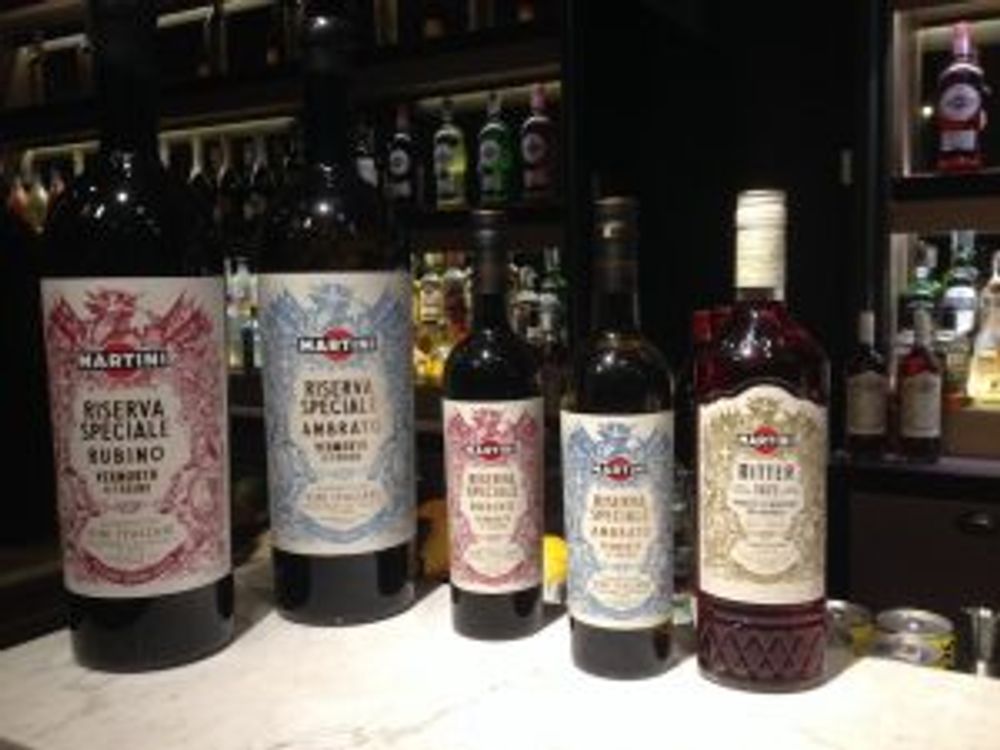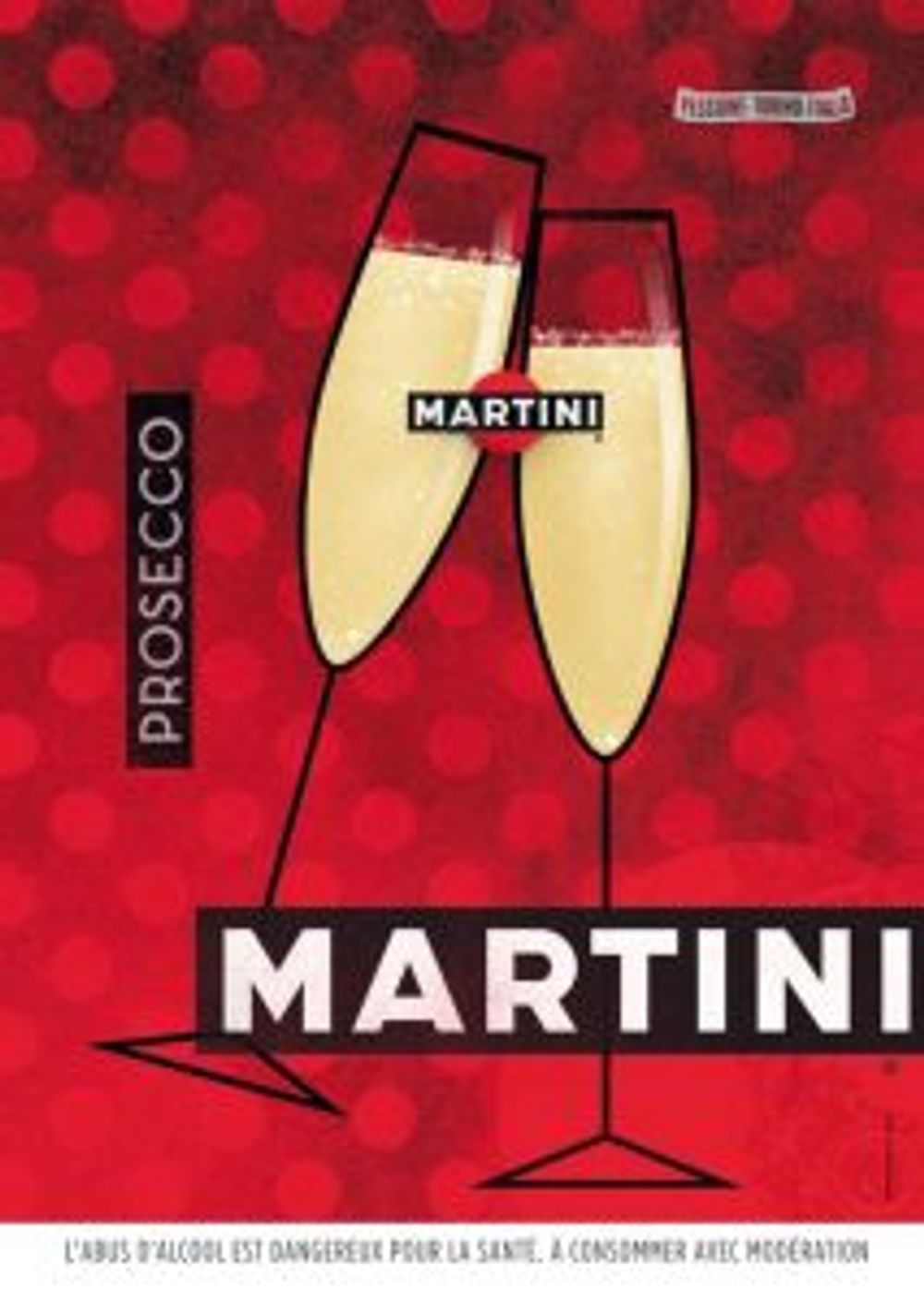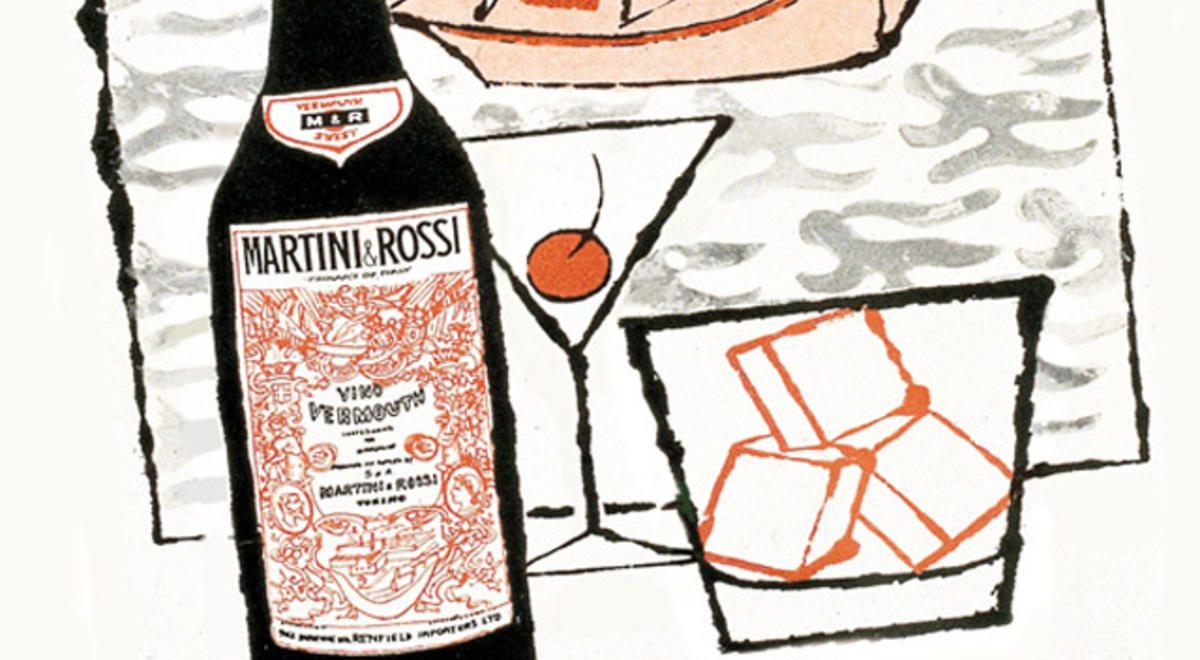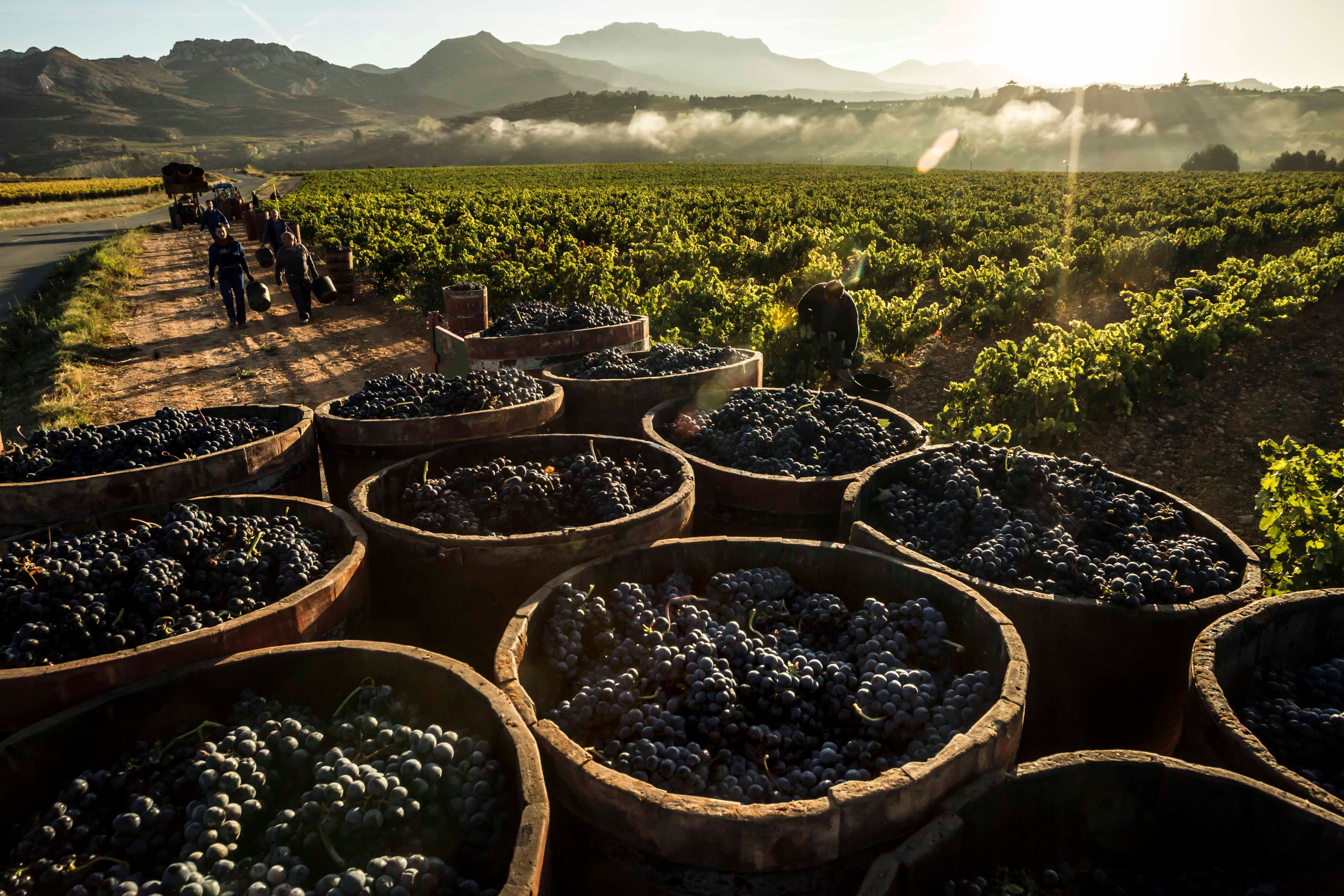Martini Asti Spumante has been suffering an image problem in the UK with heavy discounting not helping matters – sales are 40% down on what they were in the mid-1980s. So is the timing right for the company to innovate with an upmarket Vintage Prosecco?
“Erm, could I get some more of that Prosecco please?”
Well, that’s nine words I thought I’d never say – ten if you include the “erm,” which you probably should because it speaks of my somewhat confused state at that point. Never a fan of sparkling Glera at the best of times (generally too sweet, too fizzy and too thin), I’ve never, ever, consumed more than a single glass in a sitting.
Yet here I was asking for more of the stuff.

The famous Martini sign, Turin
And to make this story more confusing still, I was sitting in the historic HQ of Martini in Pessione, just outside Turin, where the world-famous vermouth was first launched onto an unsuspecting but thirsty world by Alessando Martini in 1863 – just two years after the completion of Italy’s Risorgimento obviously made Italians keen for a slightly fortified wine filled with some 40 botanicals.
The launch was hugely successful, and the brand became world famous, particularly after Luigi Rossi joined up, attached his name to the company and helped commercialise it. By 1900, the famous red vermouth – which is actually made from white Trebbiano grapes before getting its colour from subsequently added botanicals – was being exported to some 80 countries from the specially built railway outside the factory, via the nearby port of Genoa.
Over the following century, Martini continued to build on the success of its famous vermouth after adding a drier, white version in 1910. It appealed to the health conscious; vermouth’s origins can actually be traced back to Roman times when water was often unsafe to drink and people believed in the benefits derived from the medicinals added to the wine.

And it was adored by the trendy and fashion-conscious – with Martini-based cocktails becoming the drink of choice during the Jazz Age (even today, Martini cocktail glasses adorn the cover of F. Scott Fitzgerald books, complete with green olive and stick).
And, of course, it has appealed in the modern era, with the famous glossy print, film and TV advertisements of the 1960s and 1970s (“Anytime, any place, anywhere”; “the most beautiful drink in the world”) consolidating its glamorous image, right up to today where the likes of George Clooney promote the beverage.
So step back in time and revel in this classic bit of nostalgia.
Back to the future: dipping into Martini’s illustrious past
A visit to Martini at Pessione is something that has to be done by anyone with any interest at all in beverages (even if you may not necessarily be a fan of vermouth or cocktails).
A fascinating museum takes you through the early days of alcohol consumption, complete with Roman era drinking vessels, bottles dating back to the early days of Martini and Rossi – including some dubious Amarone amongst other wine types. Fascinating posters highlight the brand’s continuing association with glamour, good living and what would have once been called the ‘jet set,’ with artists including Andy Warhol happy to put their hand to promoting the brand.

The museum demonstrates the amount of work that goes into creating Martini, including some 40 botanicals derived from specific locations (including Madagascan cloves and cinnamon from Sri Lanka), although the specific recipe remains a closely guarded secret. And the museum reminds you that Martini is not just about vermouth.
Martini actually started making sparkling wines back in 1901, and soon established market dominance in the production of spumante from the Asti region, which it holds today: Martini currently has some 42% of Asti market, and as before, the wine is made from 100% Moscato.

Martini HQ in Pessione
Today, sparkling wines account for some 30% of the company’s sales, although some say the category has been allowed to flounder since the Bacardi group took full control of Martini back in 1993; being a predominantly spirits based group, wine was arguably not a central concern. And Asti – the biggest part of Martini’s wine portfolio – has been suffering something of an image problem, with supermarkets like Asda selling Martini Asti Spumante as a loss leader at heavily discounted prices (around £6 per bottle), and sophisticated consumers eschewing a product that tends to be rather on the sweet side.
“We really need to move the image away from cheapness and somehow reinvent it,” admits Martini’s operations director Giorgio Castagnotti, pointing to the fact that sales of Asti Spumante have dropped from the early 1980s level of 100m bottles to around 65m today.
“But perhaps a product needs to die away before it can be reborn”.

Livio Prandi, winemaker
He sees growing evidence that with the popularity of Prosecco, some people are looking at Asti again with fresh eyes, curious perhaps to see what their parents and grandparents drank. The slide in sales, he says, has definitely halted.
To help boost them, Martini – under new winemaker Livio Prandi – has been diversifying its range. Alongside the regular Asti with alcohol of 7.5%, and the fruit-forward demi-sec rosé, which sell in the UK for around £8 a bottle before discounting, it makes a Brut from a blend of Pinot Bianco and Chardonnay and a dry rosé from Chardonnay, Welschriesling and Nebbiolo. Prandi has just launched a sparkling wine made entirely from Welschriesling/Riesling Italico, to cater to as wide a range of tastes as possible.
But it is making its biggest step with a new Vintage Prosecco
Martini has actually been making Prosecco since the early 1990s – before it really became the sparkling drink of choice in British and other markets – and the drink has been making inroads into Martini’s wine production, and into the UK on and off-trade where it sells for around £15-16 a bottle, or at least twice the price of Martini’s entry level Asti.

But the new Prosecco, which launches into the UK this November, is a very different beast indeed.
Nicely packaged in a cardboard box proudly displaying the Martini logo with a bottle embossed with glass drops to tantalisingly illustrate the delicious bubbles within, this is an unashamedly upmarket product. In Italy, where it retails for around €16, the wine is called Martini Collezione Prosecco; in the UK and other markets, Martini is emphasising the wine’s vintage characteristics by calling it Prosecco Vintage 2016. The price here is yet to be determined but it will probably retail in the £15-20 bracket, which along with it being vintage – not that usual in the Prosecco world – will distinguish it from most Proseccos being sold in both the off and on-trade.
Castagnotti refuses to be drawn as to whether Martini will continue to launch new products to revitalise its sparkling wines segment, in the hope that it will encourage consumers to look anew at Martini Asti, ignoring its unwanted reputation as a supermarket loss leader.
However the Prosecco Vintage 2016 looks set to be something of a game changer for Martini, which next year celebrates its 155-year anniversary. Castagnotti admits that when Martini Bianco was launched all those years ago, people could never have predicted the bright future which lay ahead for it, becoming a staple part of the Martini portfolio.

“What is a tradition? It’s an innovation that has succeeded over time,” he says.
As I suggested in my opener, this is no ordinary prosecco: pale gold in colour, with hints of light emerald, it has delicate fruit flavours and also light and delicate bubbles, without the excessive fizz or cloying sweetness that make so many of its peers nigh undrinkable. Critics aside from me are already taking notice: in May the wine achieved a top score of 95+ points at a UK drinks competition, beating out such famous brands as Bisol, Bottega and Andreola, with the MW judging panel giving the product a prestigious Master Medal.
This Christmas, as consumers look to celebrate with what has become Britain’s favourite fizzy tipple, Martini Prosecco Vintage looks set to become part of many festive plans. Including mine.




































